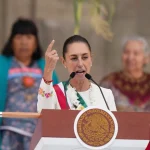Nearly 150,000 Tesla cars are using the company’s new “safety score,” a tool rolled out last month to determine whether owners can access the beta version of its “Full Self-Driving” software, executives said during its third quarter earnings call.
While 150,000 cars are now part of the Full-Self Driving (FSD) beta enrollment program, a fraction of drivers have been given access to the software. Only 2,000 drivers have been able to test the FSD program over the past year. Earlier this month, Tesla rolled out version 10.2 to around 1,000 additional owners with perfect safety scores.
Tesla charges $10,000 for the FSD software, which CEO Elon Musk has promised for years will one day deliver full autonomous driving capabilities. However, Tesla vehicles equipped with FSD are not self-driving. FSD is an advanced driver assistance system that includes a number of automated features, including its parking tool Summon as well as Navigate on Autopilot, an active guidance system that navigates a car from a highway on-ramp to off-ramp, including interchanges and making lane changes.
The latest FSD Beta is supposed to automate driving on highways and city streets. This is still a Level 2 driver assistance system that requires the driver to pay attention, have their hands on the wheel and take control at all times.
While the safety score, which must be a perfect 100 to gain access to the beta software, is being used to meter out access to FSD, Tesla has other uses in mind. The company wants to use the feature to better inform its blossoming telematics insurance product, which just launched in Texas in early October. The safety score takes into account things like braking, turning, tailgating, forward collision warnings and forced autopilot disengagements in order to predict the probability of a collision.
So far, Tesla has gathered over 100 million miles of driving data, analysis of which it showed that the probability of a collision for a customer using a safety score versus someone who is not using the safety score is 30% lower, according to Zachary Kirkhorn, chief financial officer of Tesla.
“It means the product is working and customers are responding to it,” he said.
Because Tesla cars are connected, the company has been able to use enormous amounts of data to assess the attributes of drivers and whether those attributes correlate with safety, said Kirkhorn. Tesla has used this driving history data to create the model that’s able to predict the probability of a collision over a period of time.
“The model is not perfect, the model is a function of the data we have available,” said Kirkhorn. “As that data set continues to grow, we continue to experiment with new variables…and from that model being able to predict the frequency of collision, we can then align that against a price curve.”
This allows Tesla to offer individualized pricing that’s “integrated into the car, integrated into the app, integrated into that customer’s experience,” complete with a feedback loop that communicates to the driver what driving adjustments need to be made to decrease the probability of a collision after every drive.
When Tesla began researching insurance, the company found that traditional insurance companies calculate premiums based on static and existing data, like accident history, marital status, age or other demographic information. Kirkhorn said the result is low-risk customers end up overpaying on their insurance, and that overpayment then goes to subsidize the riskier customers.
“As we looked at this and we looked at the data, we though, this just doesn’t seem like it’s fair,” said Kirkhorn.
Tesla has offered insurance in California for about two years, but Texas is the first state where those premiums will be dictated by safety scores. The company has a roadmap of additional states to launch its insurance as it receives regulatory approvals, and its goal is to be in every major market in which Tesla cars exist, Kirkhorn said.
Powered by WPeMatico






